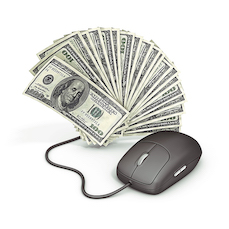What the New Medicare Drug Changes Mean For You — And How You Can Save on All Your Prescriptions Starting Today
The questions you should ask your doctor and your pharmacist to guarantee you get the best deal

On August 29, 2023, the Biden administration unveiled the first 10 drugs that will be subjects of price negotiations between the drug manufacturers and Medicare. On the list: Bristol-Myers Squibb’s blood thinner Eliquis, Johnson & Johnson’s own blood thinner, Novo Nordisk insulin products and Merck’s diabetes drug Januvia (more below). This announcement was the most recent application of the Inflation Reduction Act (IRA) — a law that aims to make medications less costly for older Americans and reduce drug spending by the federal government. Understanding this new law and the changes it brings with it can help you save on all your prescriptions and overall drug costs.
How will the IRA-instituted changes affect you?
The most important development when it comes to your budget: Starting in 2025, the yearly out-of-pocket spending will be capped at $2000 per patient (there currently is no hard cap — you’re on the hook for the first $7400 and then 5% coinsurance after that).
The second most important development (referenced above) as far as your bottom line is concerned is a little less direct. For the first time, Medicare has been granted the opportunity to negotiate directly with drugmakers for anywhere from 25% to 60% discounts by 2026 on 10 of the industry’s most popular medicines, which account for 20% of Medicare’s drug costs. This will save the government a huge amount of money, but how does it impact you? The idea is that there will be a trickle-down effect: If the government is paying less for these drugs, then presumably the premiums will go down and co-pays for drugs will also go down.
Some more of the new provisions that can help you save:
- Drugmakers must hold price increases down to no more than the rate of inflation or pay massive rebates to Medicare.
- Insulin costs for Medicare members have been cut by 40% this year to $35 a month.
- Government-recommended adult vaccines, such as the $200 shot for shingles, are now free.
- Next year, in 2024, Medicare members will no longer have to pay a 5% coinsurance fee for their drugs after they already shell out the out-of-pocket maximum.
The Top 10 Drugs Slated For Price Negotiations
The first costly 10 (which will grow to 20 in 2029) subject to price reductions were just named — and they may already even be in your medicine cabinet:
Eliquis and Xarelto to prevent strokes and blood clots
Jardiance and Entresto for heart failure
Januvia and Fiasp for diabetes
Farxiga for kidney disease
Enbrel for autoimmune conditions
Imbruvica for blood cancers
Stelara for Chron’s disease
Once drugmakers cut prices for Medicare, private insurers will surely press for similar discounts. And some drugmakers may even drop prices to boost their images, as Eli Lily just did by reducing its insulin to $35 a month across the board. In other words, this could result in lower drug costs even for those not yet on Medicare.
It’s worth noting that Americans pay twice as much for medicine as those in other developed countries, where pharmaceuticals are more tightly regulated. Here, the Food and Drug Administration (FDA), by law, cannot consider the price of any drugs it may approve for sale, even when their development was financed with taxpayer dollars. It’s common for you to pay $50 for the very same drugs that go for $5 in Germany or England.

The drug companies will fight this in court
While these savings amount to steep projected reductions in drug industry profits, Big Pharma (the Pharmaceutical Research and Manufacturers of America) and individual drugmakers already have filed eight lawsuits. The suits seek to block the government’s authority to negotiate for Medicare discounts, as well as its power to impose massive fines or even boot companies out of Medicare if they fail to negotiate in good faith.
Besides calling government negotiations unconstitutional, Big Pharma’s bottom-line contention is that lower prices will strip billions from research and development, thereby crippling the creation of new breakthrough medicines that would save lives.
The Biden administration dismisses that argument as “absurd” and notes that there is nothing in the Constitution that bars the government from negotiating lower drug prices.
Beyond that, the nonpartisan Congressional Budget Office agrees that the discount negotiations will reduce the number of new drugs — but only by 1%, just 15 new drugs out of 1,300 over the next 30 years.
There’s no doubt where the public stands. The nonpartisan Kaiser Family Foundation reports that 89% of Democrats support drug negotiations. And so do 77% of Republicans. Indeed Former President Donald Trump took aggressive steps to lower drug prices for older Americans toward the end of his term.
President Biden says “it’s outrageous” that Americans are paying up to three times as much as citizens in other countries for the same medicines, precisely because we have not been negotiating discounts. Virtually all other developed countries negotiate and pay much less.
How to save on all of your prescriptions today
While you wait for some of these changes to be battled out in court, you can start saving now by taking advantage of the vital vaccines available free of charge at a pharmacy near you, as well as getting $35 insulin if you’re among the 3 out of 10 people who need it.
In addition, check out these 14 common-sense questions you can ask the professionals to help you cut your drug costs, from simply making sure you have the right-priced dosage to asking your doctor for free samples — and so much more.
6 questions to ask your doctor to save on prescriptions

1. Why are you prescribing this drug?
Your doctor should be able to describe the drug’s benefits clearly and, importantly, tell you when you should expect to experience them and how long you should continue taking the drug after you feel relief. For instance, a woman with a common urinary tract infection should feel better in two days on the antibiotic nitrofurantoin. But studies show that it takes a full seven days for this antibiotic to wipe out the bad bugs that need wiping out. That’s important information because it can save you money while ensuring you get the best result in two ways. First, you won’t pay for what you don’t need. In this case, you’ll simply buy a seven-day supply, as opposed to a 30-day supply, which is some doctors’ automatic default. Second, if it’s working, you’ll be sure to take the entire course of your prescription for maximum effect, and if it’s not working as expected, you’ll know to check back to learn what your next-best option is.
2. Why are you suggesting this specific dosage?
Nearly always, you want to take the least amount of medicine that’s effective. Also, though drug prices are generally flat dose-to-dose, there are cases of drugs costing $800 or $4, depending on the dosage. And insurers routinely cover one dose of a drug and put it in their “formulary” (the list of exact drugs they cover) — but they won’t give you a dime for another dosage, not on that approved list.
3. Can I split this pill in half?
Thanks to the drug industry’s practice of “flat pricing,” many pills cost roughly the same regardless of potency. For example, you can buy a 30-day supply of 40 mg. Lipitor for your heart for $35 or an 80 mg. supply for $36. So if your doctor wants you to take 40 mg. a day, why not buy the 80 mg. tablet and split it in half, or take the capsule form every other day? Warning: Never split pills without an explicit okay from your doctor.
4. Is there a low-cost generic available?
On average, brand-name drugs cost four times as much as generics, which are nothing less than FDA-approved copies with the same active ingredient, strength, safety and effectiveness. Once in a while, a doctor may insist on a brand name with a coating to protect against gastrointestinal issues. But generally, why pay even three times as much for Crestor for your cholesterol, for example, versus generic rosuvastatin? Also, if there isn’t a generic for your prescription today, keep checking with your insurer. The FDA is approving three new generics every day.
5. Do you have a manufacturer’s discount card for this drug?
Your doctor has stacks of discount cards in her cabinet that were dropped off by drugmaker salespeople. She could hand you one. If she doesn’t have one, check the drugmaker’s website. Experts estimate that manufacturers offer customer-building savings cards for 9 out of 10 of their brand-name drugs. Their idea is to hook you on the drug at, say, $10 a month for a limited period and then keep you coming back at the full $90 price. But discount cards can work for you too. You get to try the drug at a deep discount and decide whether it’s worth the full price.
6. Better yet, can you give me free samples?
Drug company salespeople give doctors around $12 billion worth of free samples every year. So there’s a good chance your doctor can give you a generous supply for free. Then you can judge whether the drug works for you and is worth a prescription. Just ask, and you could save hundreds.
3 questions to ask your insurance to save on prescriptions
1. Can you name three ‘preferred’ drugstores near me?
Your friendly local pharmacist, like any merchant, can charge whatever he wants for medicine — say, from $4 to $400. Insurers protect you by negotiating prices with drugstores in return for their customer traffic. As a result, you can save 25% or more on your prescriptions at your plan’s “preferred” stores, which nearly always include nationwide chains like CVS or Walgreens. And don’t stop there: Check the costs among the preferred stores; you could save even more.
2. Can I save money by ordering through your mail-order program?
You might be able to get three-month supplies of medications for chronic conditions like diabetes and high blood pressure at zero co-pays and with free shipping through your plan. But as with all mail orders, you run the risk of delays and damage. So also ask if you can get your 90-day supplies locally. Many insurers offer that option at mail-order prices through chains like CVS and Walgreens.
3. Are each of my medicines on the insurer’s formulary?
Insurers constantly change the list of exact drugs they cover — their formularies, thereby forcing you to make sure regularly that your drugs are still covered. Check on your refills as well as any new drug before its prescribed. Also, always call your insurer before renewing your drug plan to be certain your medicines will still be covered in the new year. Be specific. Ask about the medicine’s dosage and its form.
For example, if one had coverage with insurance company WellCare, they would be charged $83 for 30 days of the 2 mg. capsule of muscle-relaxer tizanidine — or $300 with no insurance because the capsule wasn’t in its formulary. But it costs only $8 for the same dosage in tablet form, which is in its formulary.
4 questions to ask your pharmacist to save on prescriptions

1. Is there an over-the-counter (OTC) alternative to this prescription?
You might ask your doctor too. But double-check with your pharmacist: He or she is likely to be better informed about OTC alternatives that typically cost no more than $30. For example, allergy nasal sprays Flonase or Nasacort Allergy 24HR at around $25 for 6 oz. might give you as much relief as prescription Veramyst or Nasonex at $200. Also, once in a while, there are prescription drugs that cost around one-third less than their OTC options. That’s rare, but it’s worth asking about.
2. Can I save by paying out of pocket, rather than using my insurance?
A new federal law that passed nearly unanimously in these divided times compels pharmacists to tell you if you can save by paying directly out of pocket rather than using your insurance plan — but only if you ask. Paying this way is often cheaper, especially if your plan has a high deductible. Adderall for attention deficit disorder, for example, can cost you more than $200 with a high deductible, but only $30 cash by shopping dependable online drug discounter GoodRx. Your pharmacist can also advise you about perhaps buying a 90-day supply to save up to 50%. But again, you have to ask!
3. Will you match the lowest price I can find?
Many local pharmacy store managers, even at chains, will match the lowest price you can find at another store. Philippe Boistard was paying $140 and $10 for two prescriptions at his Battleboro, North Carolina, drugstore until he discovered he could buy them for $30 and $4 at Walgreens. The first store manager immediately said he’d match the chain’s prices. There are two sets of prices, Boistard said. “What they charge you and what they’re willing to match.” However, drugstores usually won’t match a rock-bottom price you might find online.
4. Ask your chain-store druggist: Is my prescription on your deep-discount list?
Drugstore chains sell a handful of popular generics for around $4 to $10. Better yet, some grocery chains give away 90-day supplies of a few drugs for free to encourage foot traffic. Publix, for example, hands out lisinopril for blood pressure and metformin for diabetes.
But be careful. If your doctor does not prescribe the exact dose or form of medicine on the deep-discount list, you could be billed hundreds extra. For instance, you can find 30 days of 20 mg. antidepressant paroxetine at a deep discount of $4, or get billed $123 for 25 mg. paroxetine. Why? Said one New Jersey pharmacist: “The 25 mg. pill isn’t on our discount list.”
Tip: Don’t automatically refill deep-discount prescriptions. Stores constantly change their approved medicines, their dosage and forms. One month you may pay $4, and the next month you owe $100.
Click through this link to learn more about saving at the drugstore.
1 question to ask your drugmaker to save on prescriptions
Do you have an assistance program for this drug?
Virtually every Big Pharma manufacturer maintains extensive assistance programs for their “specialty” drugs for life-threatening diseases like cancer, which are priced from $800 a month to over $20,000 — no exaggeration. If you unfortunately ever need such a drug, there are affordable options. Some drug manufacturers offer co-pay assistance programs where they will cover the cost of your co-pay, bringing your total out-of-pocket responsibility to zero.
Whereas with other companies, chances are you’ll qualify for assistance if your family is making less than $120,000 a year. If so, for example, Celgene may FedEx its $22,000 revlimid for blood cancer to you overnight for $25 a month. Low-income patients with no insurance may even get it free.
You can also research assistance programs. Go to PhRMA’s Partnership for Prescription Assistance (PPA). Enter your drug, fill out a short personal profile and up pops a list of active programs. Also, you can check the nonprofit Patient Access Network Foundation at PanFoundation.org. There’s still more help at the advocacy organizations for your disease, such as the American Cancer Society and Cystic Fibrosis Foundation. If none of these options work for you, simply go online and punch in “[your specific disease] patient assistance” for even more helpful programs.
Other ways to save on all your prescriptions
To get 5-figure specialty drugs for less
Unfortunately, there may be a time when you have an illness that requires taking a top-tier drug that costs upwards of $20,000 a month, but you just don’t have the funds to cover it. The good news? There are three places you can turn to get help.
Ask your employer: Once you explain your situation to your human resources staff, you may find that your employer can help. Some corporations, typically with more than 500 unionized workers, cap a worker’s drug costs at $1,000 to $2,000 a year. In some cases, employers have changed their group health plans to protect workers who must take expensive medications for cancer.
Apply for assistance: Hundreds of foundations, organizations and nonprofit charities offer financial aid or help cover the entire cost of prescriptions. Many are disease specific, like the Leukemia & Lymphoma Society for blood cancer patients. Plus, private charitable organizations, like HealthWell Foundation and Good Days, have helped hundreds of thousands of patients.
Explore switching to an Affordable Care Act plan: You probably won’t qualify for subsidies if your company offers decent insurance. But you cannot be turned away because of your preexisting condition, and all Affordable Care Act plans cap your combined out-of-pocket medical and drug costs at $8.550 for an individual and at $17,100 for a family.
To save at drug discount websites

You can save up to 90% on your prescriptions if you take 15 minutes to compare your drug’s price on a few discount websites before you buy or refill it. A recent price check showed a common blood-pressure drug at $2.96 at one site and $27 at another. Here, three leading sites:
GoodRx The site claims it saves its average customer $276 a year by price-checking the industry’s largest network of 70,000 pharmacies. It’s free to use, like the others. But for $10 a month, a family of six and their pets get access to 1,000 common drugs all under $10. And for upwards of $19, you can “see” a doctor online for what ails you and perhaps get a prescription.
Milligram This site sometimes offers lower prices from independent pharmacies that the site’s competitors don’t cover.
WeRx This site monitors pharmacies in exurban areas that other discounters may not reach.
Looking for more ways to save? Then click though the links below!
How To Save on Healthcare in 2023 — Doctor Visits, Prescription Meds, and More
8 Smart Ways to Save Money On Healthcare
A Doctor’s Advice: ‘Is It Safe To Get Prescriptions Filled Online?’
Disclaimer: This article is accurate at the time of publication, but some drug examples and prices might have changed since then.













